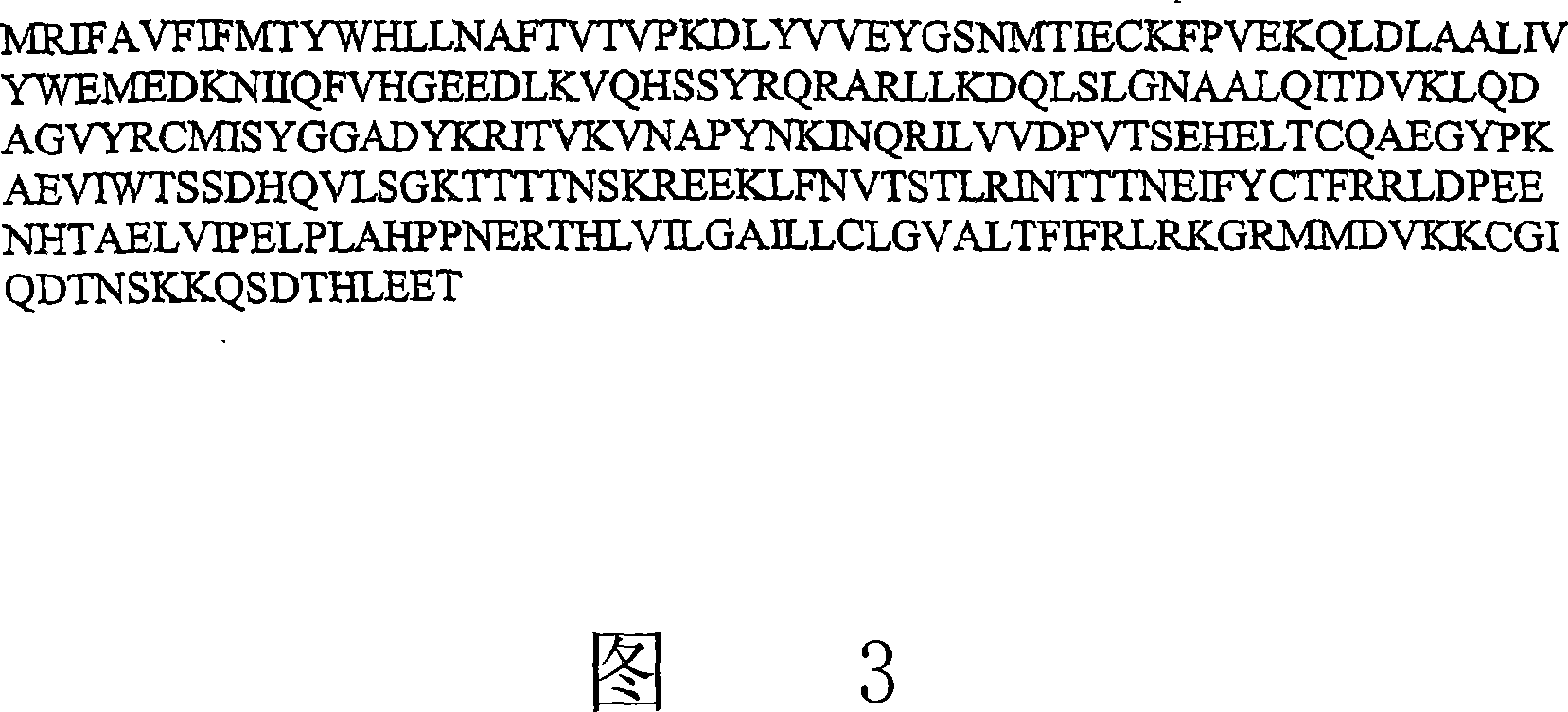B7-h1 and methods of diagnosis, prognosis, and treatment of cancer
A B7-H1, cancer technology, applied in instruments, measuring devices, scientific instruments, etc., can solve problems such as limiting the immune response of the host
- Summary
- Abstract
- Description
- Claims
- Application Information
AI Technical Summary
Problems solved by technology
Method used
Image
Examples
Embodiment 1
[0103] Example 1. Materials and methods
[0104] select patient
[0105] After approval by the Mayo Clinic Institutional Review Board, 429 patients treated with radiation nephrectomy or unilateral nephron-sparing surgery between 2000 and 2002 were identified from the Mayo Clinic Nephrectomy Registry A patient with sporadic clear cell RCC. Because of the pathologic features and patient outcomes of RCC subtypes, all analyzes were restricted to patients with only clear cell RCC, the most common subtype of RCC [Cheville et al (2003) Am.J.Surg.Pathol.27:612 -624]. Since the hB7-H1-specific monoclonal antibody 5H1 (below) can restain fresh-frozen but not paraffin-fixed tissue [Dong et al (2002) Nature Med. 8:793-800], according to the availability of fresh-frozen tissue sexually selected patients.
[0106] pathological features
[0107] Pathological features examined included histologic subtype, tumor size, primary tumor stage, regional lymph node involvement, and distant metas...
Embodiment 2
[0114] Example 2. Survival of RCC Patients Providing Fresh Frozen Tissue Samples
[0115] Of the 429 patients eligible for this trial, 196 (46%) were able to provide fresh-frozen tissue for laboratory studies. Patients with fresh-frozen tissue had larger tumors than those without (mean tumor size 6.0 cm vs. 5.0 cm; p=0.008). However, no other studied characteristics were significantly different between the two groups. Further, cancer-specific survival was not statistically significantly different between patients with and without fresh-frozen tissue (p=0.314).
[0116] At the last round of follow-up, 39 of the 196 study patients had died, including 30 patients who died of clear cell RCC at a mean of 1.1 years (range, 0-2.5) after nephrectomy. Among the 157 patients who were alive at the last round of follow-up, the mean follow-up duration was 2.0 years (range 0-4.1). Estimated cancer-specific survival rates (standard error, number of individuals still at risk) were 91.4% ...
Embodiment 3
[0117] Example 3. Correlation between expression of hB7-H1 in RCC tumor cells and patient outcome
[0118] Immunohistological staining of 196 clear cell RCC samples revealed that either RCC tumor cells did not express hB7-H1, or RCC tumor cells and / or RCC tumor-infiltrating leukocytes expressed hB7-H1 to varying degrees (Tables 1 and 2, and Fig. 1). Furthermore, the proximal tubules in the renal cortex, which are thought to be the origin of RCC tumors, expressed hB7-H1 in none of the 20 normal renal cortex samples studied (Fig. 1).
[0119] The proportion of tumor cells positively stained for hB7-H1 among the 196 samples studied is shown in Table 1. Scatterplots of tumor hB7-H1 expression versus expected risk of death for each patient illustrate that a 10% cutoff is appropriate for these data. Samples from 73 (37.2%) patients had >10% hB7-H1 expression in tumor cells.
[0120] Table 1. Percentage of tumor hB7-H1 expression in 196 clear cell RCC samples
[0121] ...
PUM
 Login to View More
Login to View More Abstract
Description
Claims
Application Information
 Login to View More
Login to View More - R&D
- Intellectual Property
- Life Sciences
- Materials
- Tech Scout
- Unparalleled Data Quality
- Higher Quality Content
- 60% Fewer Hallucinations
Browse by: Latest US Patents, China's latest patents, Technical Efficacy Thesaurus, Application Domain, Technology Topic, Popular Technical Reports.
© 2025 PatSnap. All rights reserved.Legal|Privacy policy|Modern Slavery Act Transparency Statement|Sitemap|About US| Contact US: help@patsnap.com



